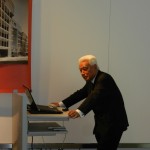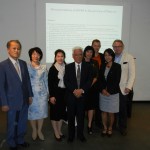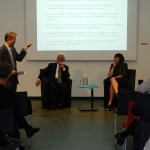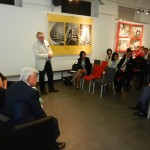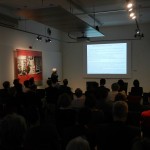Vienna-Tokyo Architecture and Urban Development Forum 2015
Lecture by KEI MINOHARA in Vienna 2015/06/17
Japanese Urban Planner, Kei MINOHARA, was in Vienna and holds the lecture under the theme;
‘From Feudal to Modern, From Growth to Maturity; Japan’s Urban Shift, Past, Present and Future’
His lecture was held on 17th of June 2015 in the Wiener Planungswerkstatt for architecture and urban planning experts in the city of Vienna. He presented the history of urban development in Tokyo last century, from the beginning of Meiji period when Japan opened up and started to learn architecture and urban design from Europe, till modern urban development now.
Because of different history and background, his lecture helped to understand, what has happened in the last century and what is going on now in modern Tokyo. Vienna is one of the rather typical European cities, which have grown slowly through their history. Tokyo was built up three times from almost nothing in the past. First, in the beginning of Meiji Era; Japan opened up and started learning from Europe including architecture and city planning. Secondly, after Kanto-earthquake; most of the town was burned down by one of the biggest earthquake in Japan. Thirdly, after 2nd world war: nearly all areas in Tokyo was bombed and burned down. Especially due to economic growth in 60th and 70th, Tokyo grew very quickly, so that complete control by the government was not always possible, but a lot of private initiative. Although Japan succeeded to become one of the leading countries in the world, it has many problems to solve for the next Era.
Mr. Minohara, who has been working in the government of Japan and also as a private urban planner longer than half a century in Japan, points out that now is a big chance for Tokyo to achieve the next Era in urban development due to Olympic Games 2020 in Tokyo. Tokyo should find the way for a better quality of life and nature, which has always been one of the more important issues also in Vienna. Two cities representing as the world most livable cities in the world* are reaching to achieve even higher quality of human life and nature together. (by Miyako Tsutsui-Nairz, Architect, Vienna)
*the Huffington post, June 24, 2015 ‘Tokyo Is the World’s ‘Most Livable City’
6 keys for the future of urban development in Tokyo (refer from the lecture by Kei Minohara on 2015/06/17)
- To regain waterfront access for people and to improve sea and river front environment for daily comfort of people, as was the custom before since Edo period.
- To demonstrate that Tokyo is honestly seeking for better design and technology for adapting her to ecologically advanced metropolis through introducing ecological planning and landscape urbanism and by realizing experimental projects.
- To demonstrate to create pioneering model housing in the age of rapidly aging society, making housing development of Olympic Villages as its model case.
- To reform transportation system by comprehensive mobility design policy towards easy walkability and easy access to public transport service with high quality interface design.
- To demonstrate and show model cases in the adjacent neighborhoods of Olympic facilities by improving the areas as model, sustainable communities with adequate public facilities and services as model examples for neighborhood improvement program for local communities with population decrease outside central areas and also with population increase within central Tokyo.
- To create a tie with local communities at large outside Tokyo Metropolitan Area by mobilizing local resources, by utilizing wooden structures and wooden bio-mass energy system, for example.
- Kei Minohara
- Vortrag_Kei Minohara
